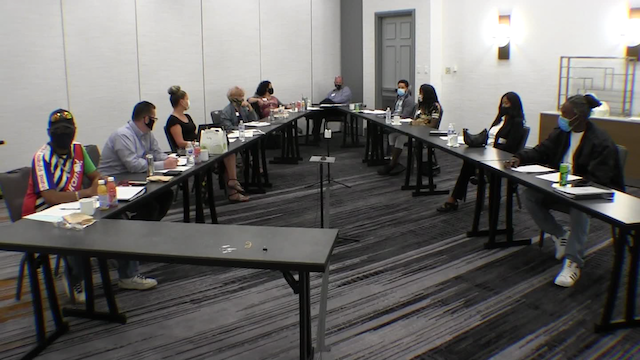With every project, I’m reminded of the power of a mock trial to effectively and efficiently inform one’s litigation strategy. Too often I think attorneys and their clients view a mock trial from an “outcome” perspective only, or primarily – a “Will I win or lose?” and “If I lose how much will it cost my client?” standpoint. This is far too simplistic a way to view a mock trial and, most importantly, the goal of the mock trial is not to “win.” One “wins” by finding out how you lose and then doing what you can to alter your strategy so that you win when it matters.
This past weekend, we conducted a four group, in-person, full-day mock trial. Through the collected data to the deliberation and verdict analysis, this one project provided the trial team and us with a wealth of information for how to best steer the litigation to a favorable outcome. Here’s a short list of things your research can and should be providing, and why you should consider doing a mock trial even when you believe there is nothing about the case you can’t tell by simply looking at the exhibits and taking the depositions.

First, this past weekend’s mock exposed undervalued or heretofore unknown worries. As much as the team can try to list everything that they believe is a worry or weakness in the case, they are always going make their assessment with their “lawyer” and “case history” hats on. Attorneys will often state a worry or weakness, but quickly follow-up with the counter that they’ve already decided will work. What you end of with is an untested worry and counter. Hearing potential jurors talk about your case without all the knowledge and biases you carry is the only way to truly find the worries, both those you thought you knew about and those you didn’t even think of; and, it’s the only way to know if the counter is effective. Jurors have their own “hats,” so you also learn which are detrimental to the case you want to make. Bottom line, a mock trial is the best way to truly understand your worries and weaknesses and figure out if there’s anything you can do about them.
Second, the detrimental impact of motivated plaintiff jurors and unmotivated defense jurors was on full display. As we’ve written about in other blogs and articles, deliberations are not a numbers game, meaning you just need to enter deliberations with more jurors on your side and then you win. Yes, numbers can help, but really it’s a motivation game. Mock trial deliberations are the best way to show how motivated jurors: 1) focus jurors on the arguments, themes, witnesses, exhibits that are most helpful to their position; 2) dismiss counter arguments as unimportant, almost trivial; and 3) tire opposition jurors out so they just give up. A quiet juror is no advocate. Deliberations show you how, when, and why your jurors gave up. This gives you the best look into how to provide jurors with powerful and easily articulatable arguments and themes so that when they are met with motivated opposition jurors, they don’t give up, they dig in.
Third, we saw how jurors found (and in a few instances, made up) inconsistencies in various expert reports. This is also tied to motivation since it was the motivated plaintiff jurors who found what they thought would defeat what were, initially, strong defense positions. What we learned, though, was that the supposed inconsistencies were based on missing information, information that was thought of as obvious or clear. But, once again, that was reading the report with an “attorney” and “case fact” hat on. Mock trials provide an opportunity to test expert reports and testimony finding out: 1) what is unclear, 2) what doesn’t fit with potential jurors’ world views (i.e., they match the report to how they think the world works and if they find the two inconsistent, they dismiss the expert’s findings), and 3) how jurors process and then use reconstructions, studies, tests, etc.; in other words, you see how they talk and think about the issue and how they would have conducted the test, etc. This provides you with “juror language” and “images” that are much more likely to resonate and persuade laypeople.
Finally, with the four-group model, we were able to subtly tweak the verdict form and presentations to see if it had any effect on the outcome. It was only a minor tweak, but the difference in how the juries approached deliberations and their final verdicts were very different. Sometimes you want to do something like this as you’re not sure if a particular piece of evidence will be admitted, or (as in this case), what the verdict form will actually look like. Research gives you a reason to fight for one over another, or to fight for the inclusion or exclusion of evidence. Over the years, there are quite a few examples of when we put something in the mock trial believing that we would want to do everything in our power to keep the information out of the real trial, and it turned out to not be a factor – one last battle to fight with the judge and opposing counsel.




